** We have better photos, these are all from my phone but the camera is in Los Angeles and I am in Dallas so these will have to do.
Team DeCorso was serious about an Amazon adventure. However, we neglected to seriously organize it employing a more Buddhist approach of living in the present moment, which seems to generally work fine here in Peru.
We tried to buy our tickets to Tarapoto on StarPeru. StarPeru has a website that more or less works but does not let you purchase tickets. At least we couldn’t get it to work. On Monday night, we decided we needed to find a StarPeru office and buy the tickets in person. We headed out for the 2 hour bus trip to downtown (we are only about 20 miles away but the traffic is very bad). Two hours later, we couldn’t find the StarPeru office. The thing about Lima is that most of the taxi drivers don’t know the way around town. Being a taxi driver is a good, easy job when you first arrive in Lima, especially if you have cousins who have a taxi as you can share the taxi and drive it 24/7. Except no one knows where anything is. We didn’t find StarPeru that night and they didn’t answer the phone, any phone, at any office anywhere. We wanted to leave Tuesday but, because we couldn’t find the office, we had to leave Wednesday.
We had a plan. We were going to fly to Tarapoto, take a collectivo combi to Yuimaguas, take a cargo ship to Iquitos and fly home. Many cargo ships arrive, dock and depart but only ONE has a phone. Because one has a phone, it is the preferred boat for all non-Peruvian travelers as you can find out when the boat will arrive and even make a reservation. The boats are collectivos, they do not depart until they are full enough so they always depart a little later than they are scheduled. Our boat, the Eduardo, was scheduled to depart at 5pm on Wednesday. You can hang your hammock as soon as you pay the Captain so our plan was to arrive on Tuesday and hang out on board until departure. Except now we could not leave until Wednesday at noon. We were scheduled to arrive at 2pm which gave us 3 hours to take the 120km collectivo combi ride to Yurimaguas. The boat is always late. It should all work out.
On Tuesday we made the painful journey again to a StarPeru office and bought our tickets (kids fly free!). We spent a lovely day hanging around Lima. Mark, Jack, Ryan and I went to eat at Astrid y Gaston, the 14th BEST restaurant in the world and, because it is in Peru, less expensive than the Vallata. #14 of the S.Pellegrino and Acqua Panna 50 Best Restaurants in the World! Mark had three traditional cebiches, I had fresh deep sea tuna with artichokes and sausage and creamy rice with green asparagus. Jack had Pink Lomitos yellowfin tuna, coconut foam, huacatay tamarind sauce and quinoa mai kai. Ryan had curry of the Andes, vegetable curry tubers and fruits of Peru with chaufa quinoa. The best part however was dessert – Jacks was “bananas trapped in a caramel cage with sweet bean paste and goat cheese ice cream”. Ryan had confite of maracuya & raspberry with carrot sponge cake served over top of sauteed bananas and raspberry foam with hand rolled divinity sticks. I had the Sensitive Sphere: raspberry sorbet contained within a chocolate shell with frozen creme brulee drenched in melted chocolate (which they let you pour as much as you need). Was it good? Not really. It was weird. And interesting. And so, so, fancy!
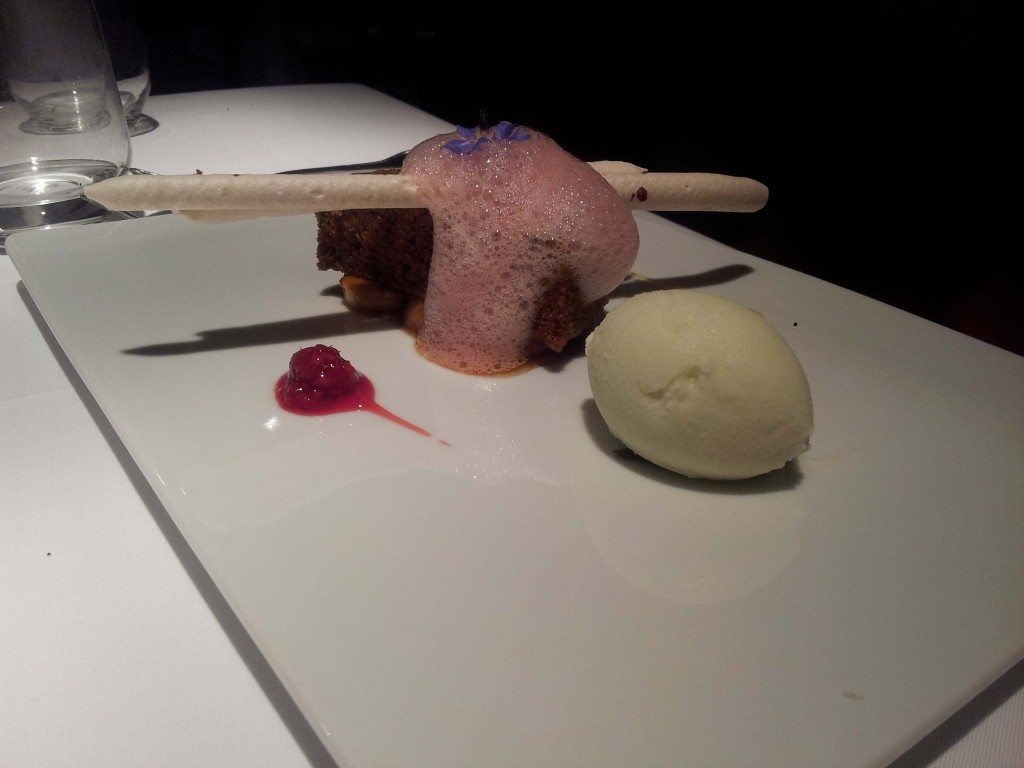
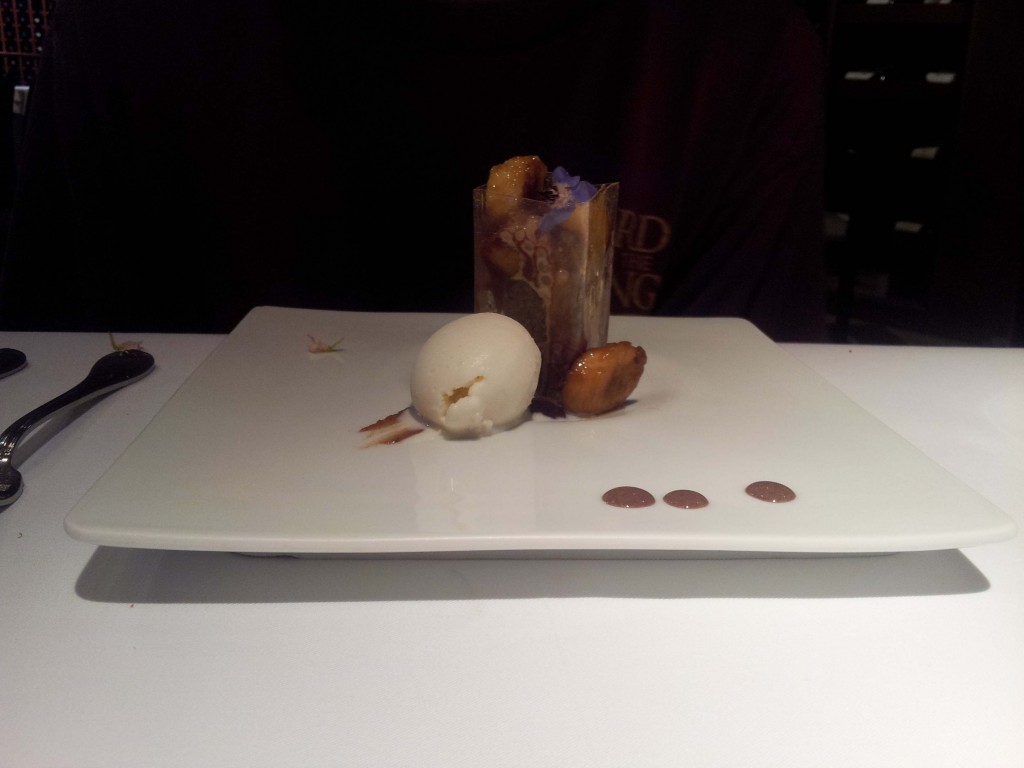
We headed home and packed for the trip. We are sparse packers anyway so this was not so hard. A few pairs of shorts & t-shirts, mosquito spray, comprehensive first aid kit, sunscreen, mosquito nets, Nescafe and an electric tea pot. Dogs were boarded at our neighborhood vet. We took a taxi to the taxi stand and took another taxi to the airport.
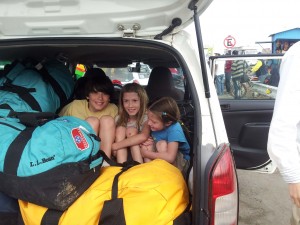
At the airport, we had one of those peculiar Peruvian situations: my passport is the only one in all 8 passports that has an almost imperceptible space between the De and the Corso. So it looks sort of kind of like De Corso instead of DeCorso. What does this mean? It means a team of StarPeru employees had to have a meeting, several phone calls, and an hour of time to figure out that it was all OK. 11 countries and no one has ever mentioned the almost space. As always, it all worked out and we boarded the plane and flew to Tarapoto.
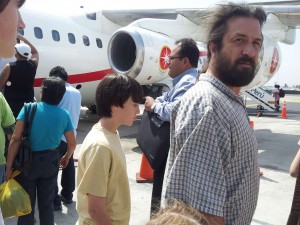
We grabbed our bags and piled into three motos that raced us to the collectivo stand. We hoisted our duffle bags on top and climbed into our collectivo and waited for it to fill up. When it was packed with 15 people, we took off.
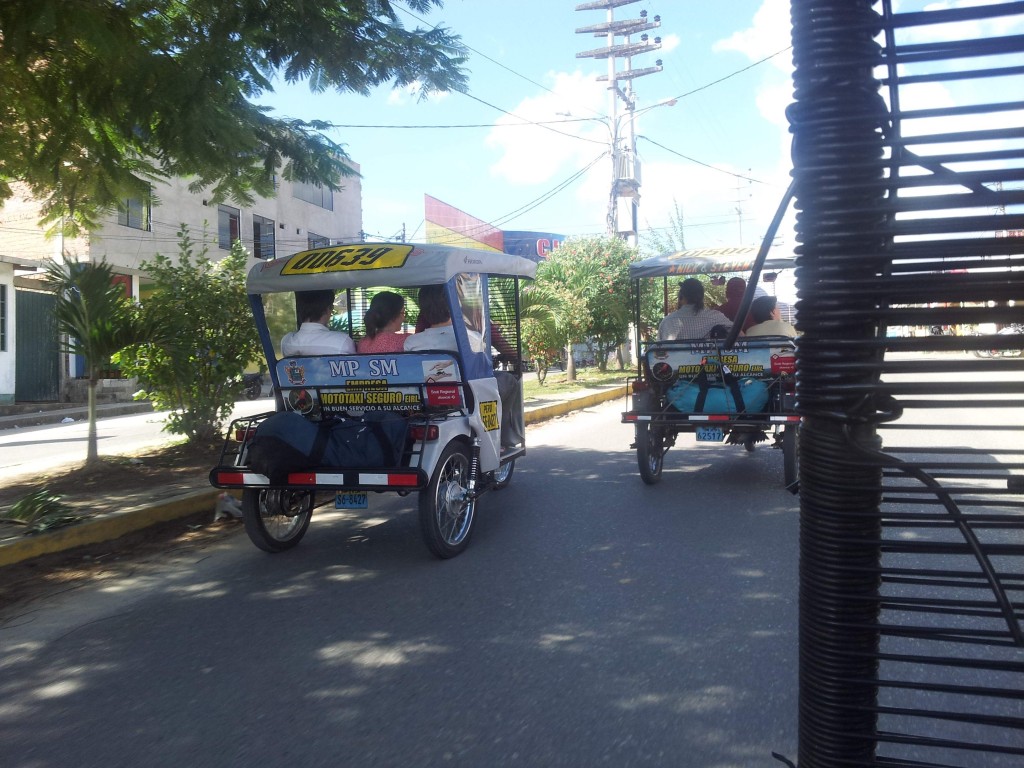
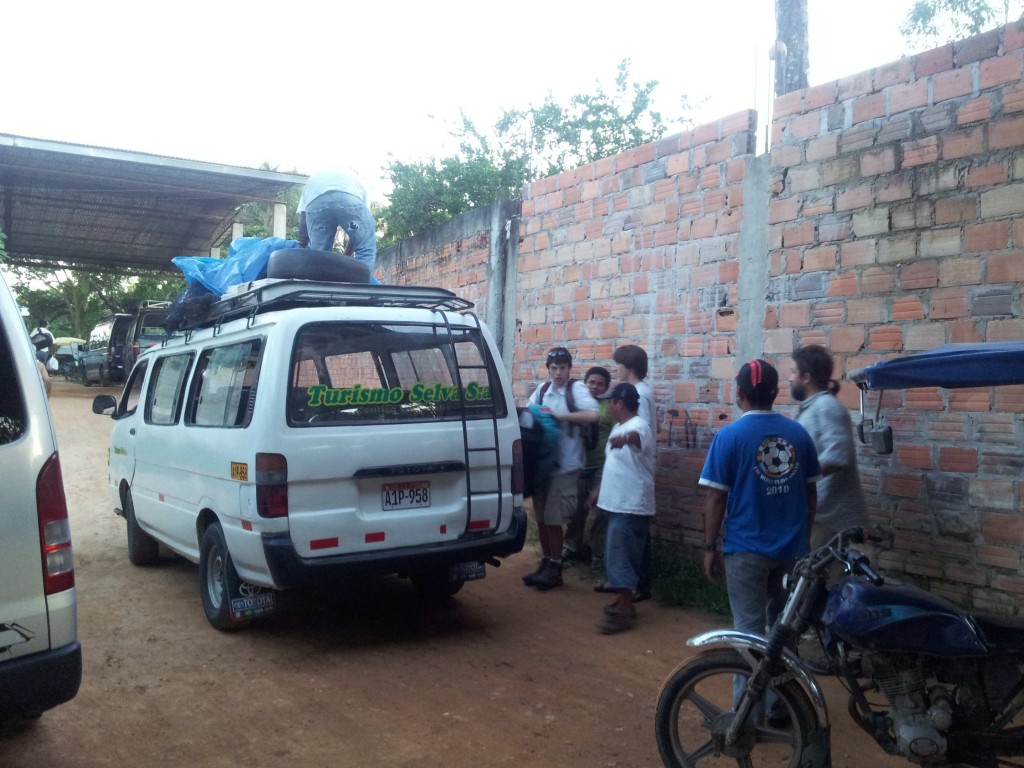
The drive is over a mountain and down the other side, 60 miles of hairpin turns and cliffs and our driver was driving way too fast, the wheels were squealing at every turn.
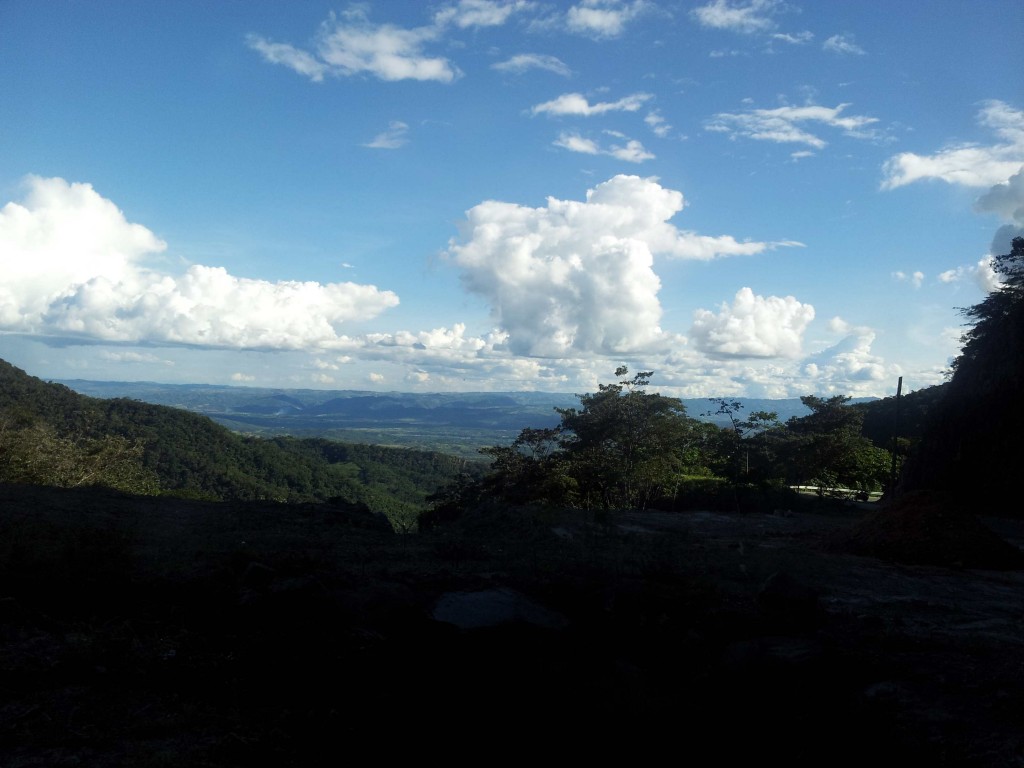
We arrived at about 6:30 and the Eduardo was still there – two guys with motos were waiting for us because, like all things in Peru, your word is as good as a contract and they knew we were coming. The two guys said we needed to get water and hammocks so they stopped at a shop and a pretty girl came out and sold us hammocks but she only had 5 so she had to call her sister to bring her more. We waited. The hammocks arrived. We stopped at a tiende and bought water and then we sped to the docks — only to see the Eduardo sailing away.
So now it was just getting dark and the bugs were coming out in huge clouds and giant bats were diving into the bug clouds. A group of men surrounded us and it seemed somewhat ominous until we came to understand that they were all trying to get us to come on their boat. There were 3 boats in the harbor (but one was all cattle and pigs) and there was fierce competition for Team DeCorso to pick either the Leisel or the Melissa. While I used my trusty Grandpa Ted flashlight to fish out the insect spray, Mark & Ryan began investigating the boats. It was night and the boats were needing to be cleaned still and they were not very inviting and the bugs and the bats were kind of freaking us out and neither boat was sailing until the next afternoon so we opted for a hospedaje. We found a very nice one, the Miagritos, thanks to the moto driver. Three clean rooms (two triples and a single) for less than $40 total. The only problem was that Yurimaguas, being a jungle town, gets going at 4am so by 8pm everything is shut down and closed. No place for dinner. Lucky for us that traveling by cargo ship on the Amazon requires that you bring a tupperware container (not rubbermaid – tupperware specifically) and a metal cup so you can eat the three meals the boat’s cook prepares. Also lucky for us is that we anticipated that we might not like stew made of medium sized rodents so we brought a long a stash of ramen, crackers, jelly — and most special of all special things, imported peanut butter.
We were up early the next morning, making Nescafé and enjoying the jungle morning.
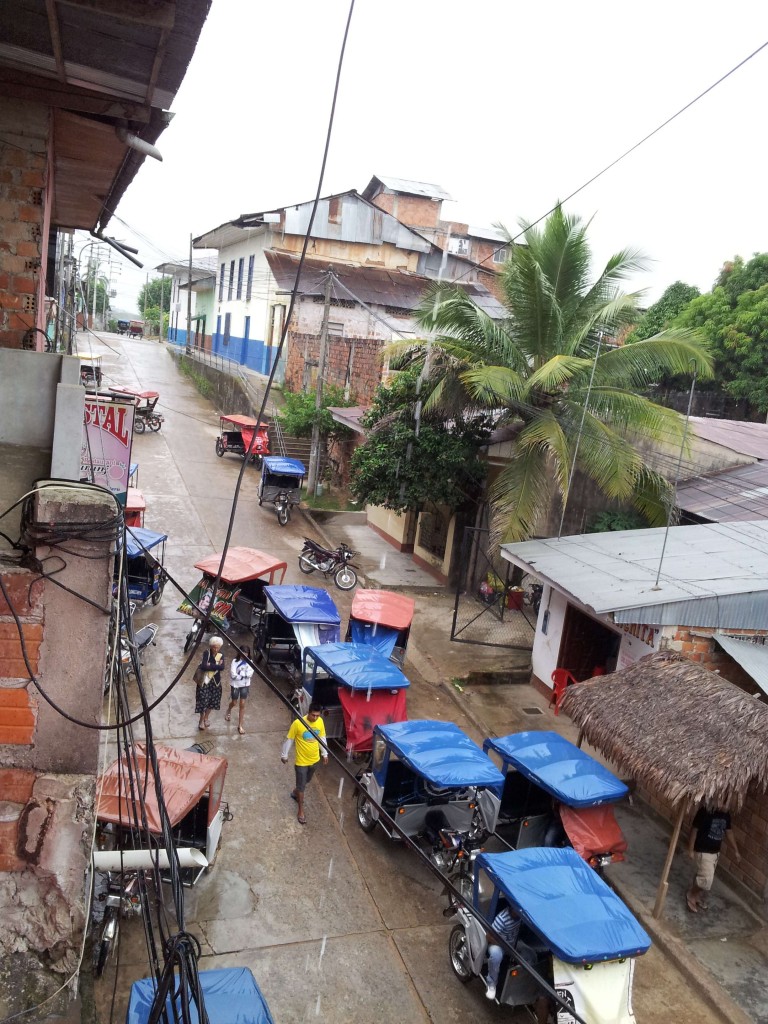
Jonny, our moto driver from the night before, came and collected us for the trip to the dock to pick a boat. The decision was easy because during the night, they decided to put pigs on the Melissa so we were left with the Leisel. We found the captain again and negotiated a price – $259 usd for passage for 8, three meals a day, a private cabin with 4 bunks and a lock, and space for 6 hammocks.
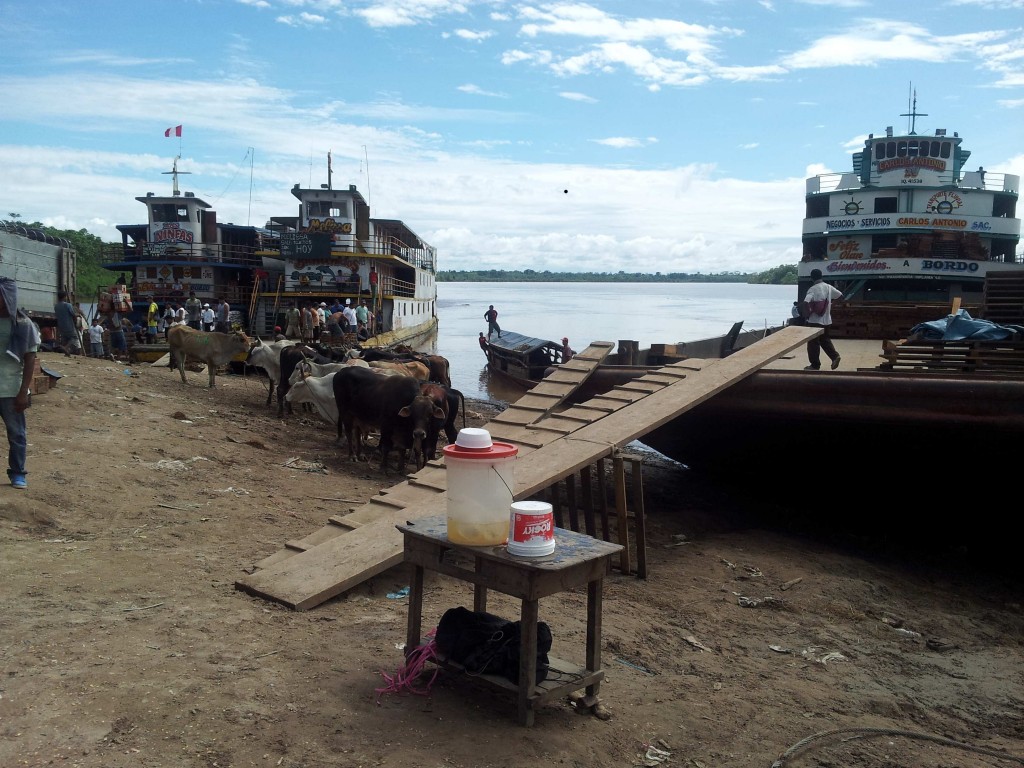
The trip takes three or four days and we can stay on the boat while they load and unload and eat and such. We needed to be in Iquitos in 6 days, which the Captain assured us was plenty of time. Jonny helped us hang our hammocks and then Ryan, Jack, Sylvia and I went to the market to buy water, beer, bread and avocados. We returned with the supplies and then we left again with Annabelle to get the bags from the hotel. While we were gone, Mark cleaned the cabin with a broom, sweeping out hundreds of spiders. The pretty hammock selling girl, Noemi, came to the boat and Ryan & Jack hung out with her and her sister Ruth all day. We watched the river dolphins jump and jungle birds fly around.
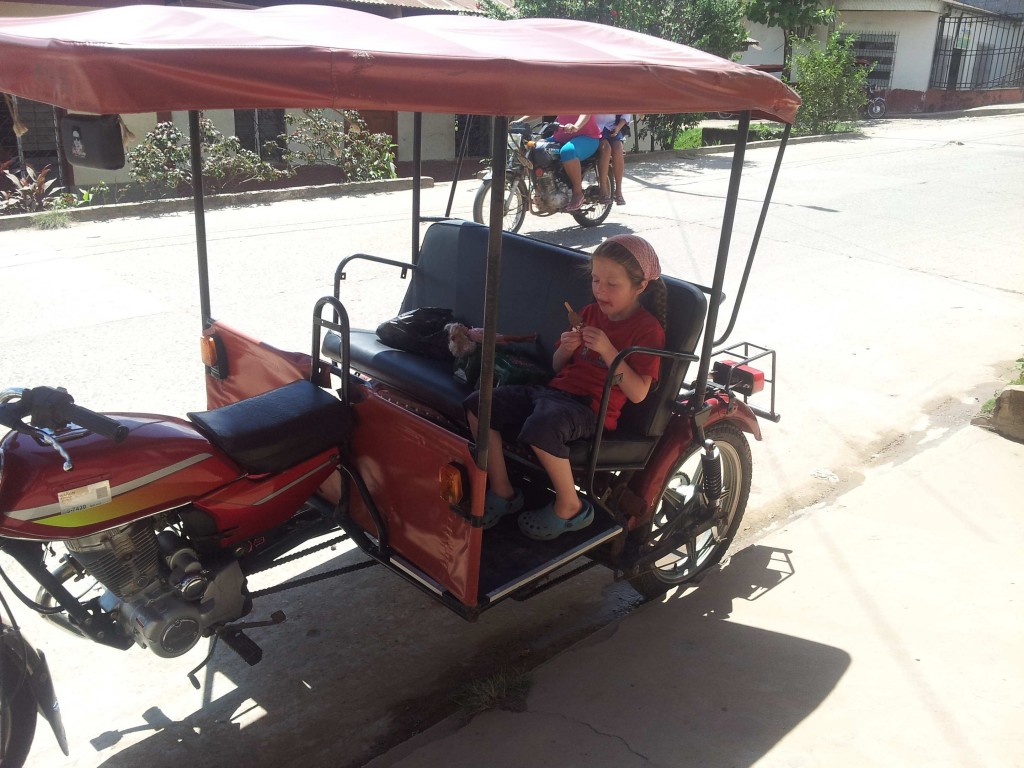
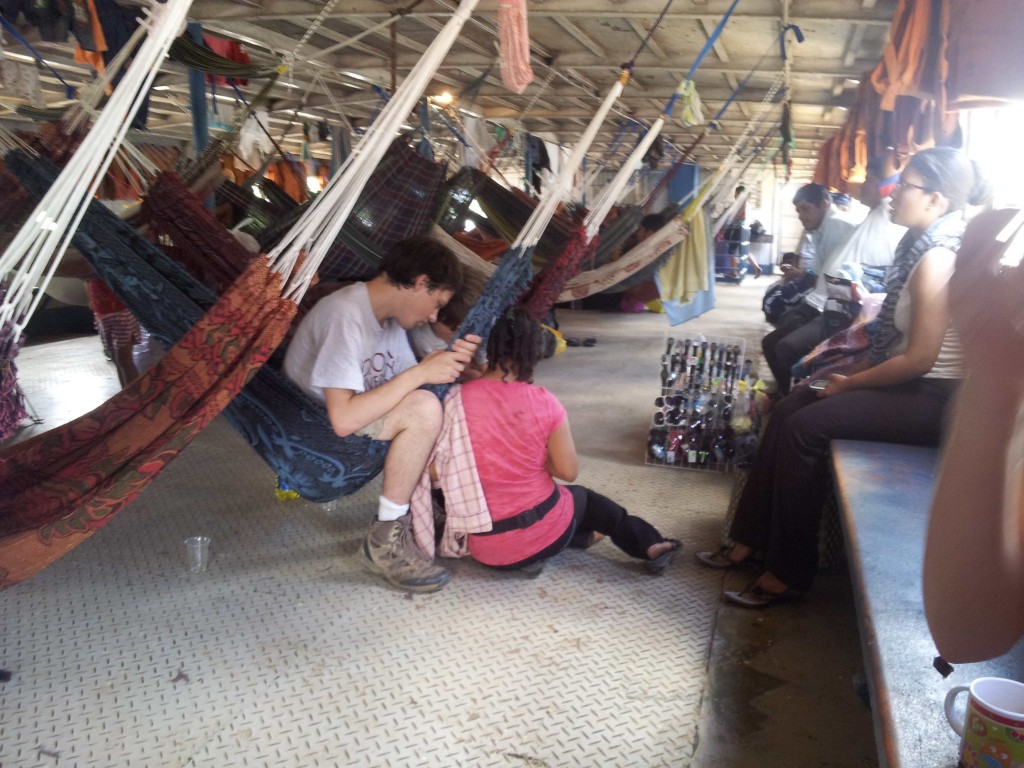
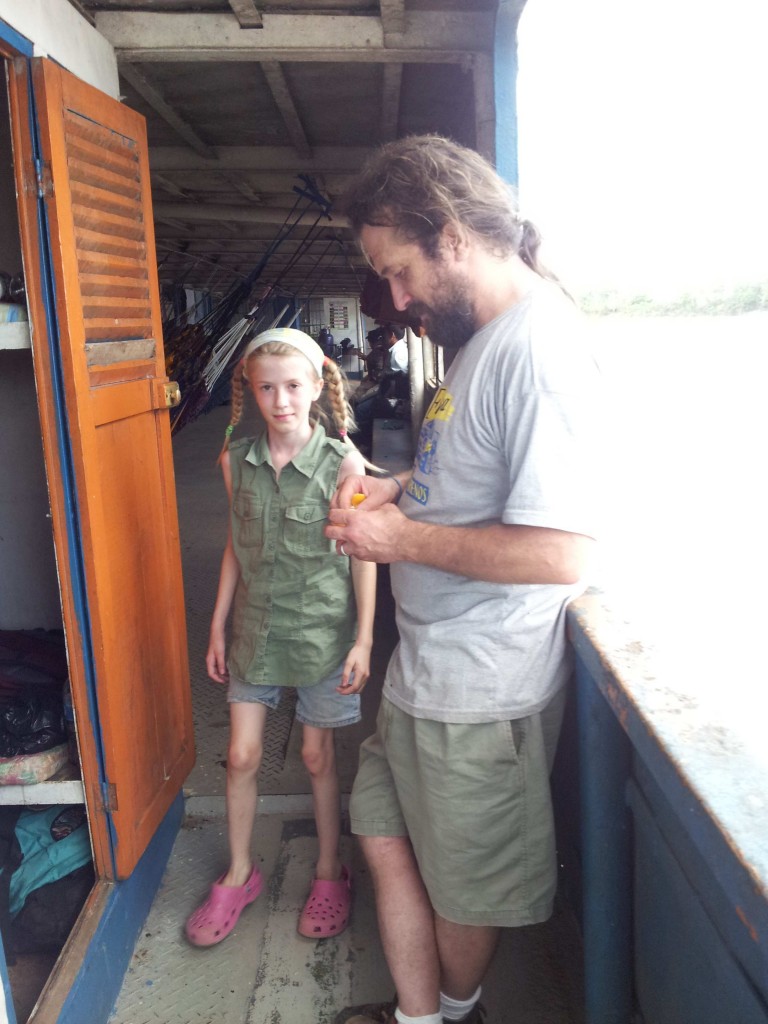
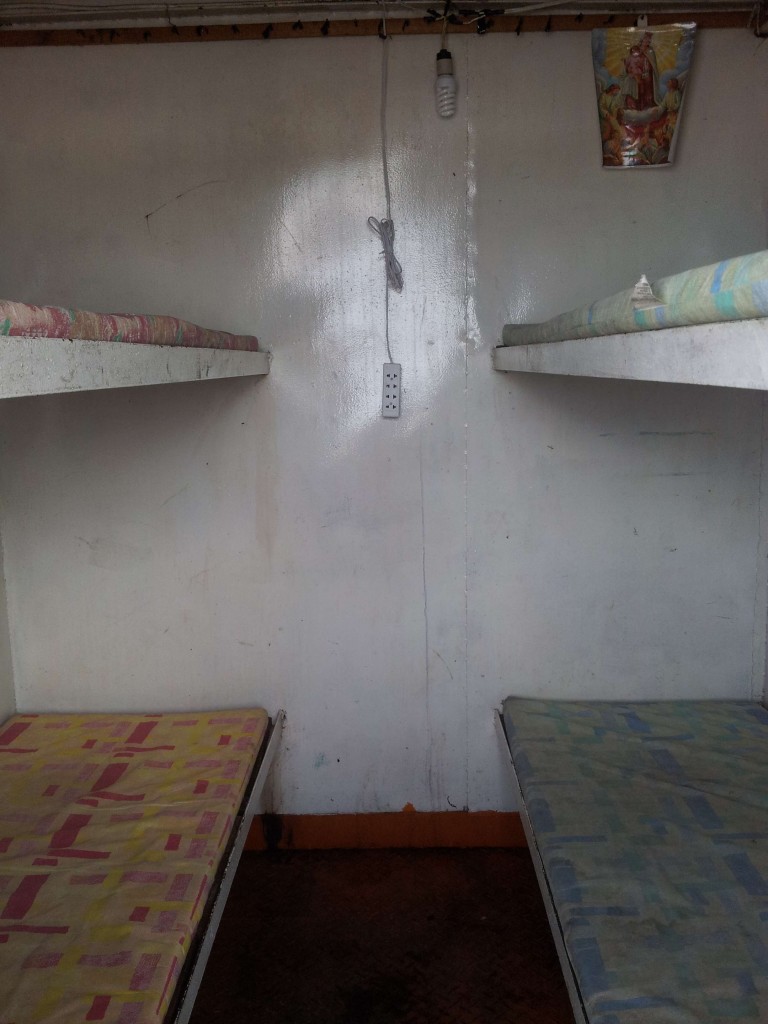
On our boat were 16 Haitans, 15 men and one woman. This was a strange thing as there were no other non-Peruvians anywhere on any boat or in the town at all. Like us, they stood out, probably more so because they were very tall and they were beautifully dressed in sparkling clean white shirts and shoes. They were very, very tall and immaculately dressed. Everyone else on the boat was Peruvian, and like us, short and not so immaculately dressed, actually quite the understatement. They were on their way to Brazil to look for work. I think despite of their very clean and new clothes, they were pretty down on their luck. After a few conversations, we realized that the woman washed all their clothes by hand every day and hung them in the sun and that they only had enough money to get to Manaus.
Generally things progressed like we had imagined. The cook made breakfast, lunch and dinner and rang a little bell and everyone queued up with their tupperwear. It was very hot when the boat did not move. We fed chunks of bread to the piranhas, which became a very popular past time with me handing pieces of bread to about 18 kids and the Haitians, who were only a little bit older than kids themselves. The piranhas violently ripped the bread apart, it was very entertaining. The Haitians made a hook out of a pin and used bread to try to catch one and after a few tries, they did catch one. We rocked in hammocks. I read State of Wonder. We napped. Breakfast was a very watery porridge ladled into your metal cup that had bananas (like Peruvian Jane Eyre food!) and rice in it with bread spread with margarine and bananas. Lunch was chicken feet stir fried with rice or sometimes spaghetti and chicken feet. Dinner was estofado de roedor de tamaño mediano (literally medium sized rodent stew). The time passed amicably. The nun whose hammock was hung near ours gave the kids tiny nun comics and a sample of black lady hair shampoo. It was a good time. Sylvia was scared of the giant beetles and Mark told her we was keeping one as a pet which made Sylvia pick it up and hold it and make a little bed for it.
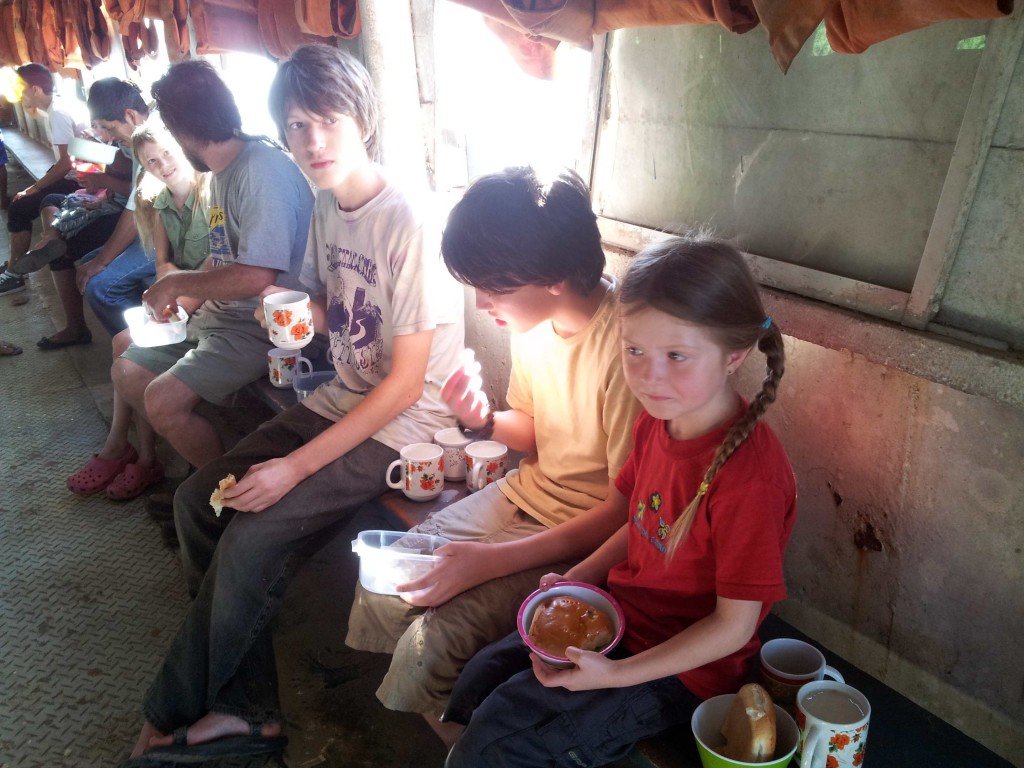
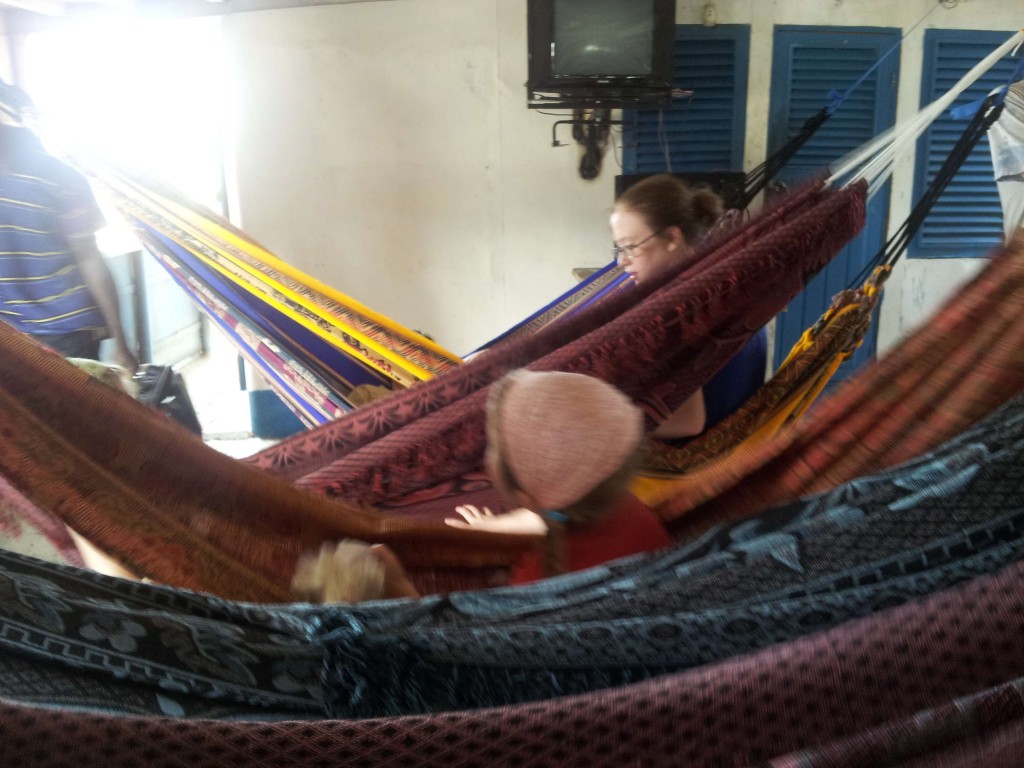
The boat had unisex bathrooms at the stern with 8 toilet stalls that also were showers. You could look out at the river and watch the dolphins. The bathroom was busy, the Haitian woman was always washing clothes, everyone showered every day and the men spent a lot of time styling their hair. The stalls were probably worse than you are imagining – no toilet seat, no light, a floor to ceiling door, all painted white but the paint was chipped and dirty and worn. The floor was always wet (from the shower). The stall was about 3 x 5 with a toilet in the middle. The shower was a pipe in the ceiling. You turned the handle and Amazon river water poured out. It was so hot when the boat was not moving, we all showered, even Sylvia.
The boat was a cargo boat with a level for passengers to hang hammocks and a few cabins. The boat fills up with cargo and unloads cargo all up and down the river, which makes for a nice, slow, scenic trip. Except on our boat, we all soon came to realize, the unloading and loading was being done mostly by very small children. The other boats used men, big, sweaty, muscled men. As can be expected, the loading and unloading of our boat was much, much, much slower. These kids were very small, like Sylvia’s age. At one particular point, our boat was taking on a load of bottled water and when the container of bottled water was loaded, we were moving on. The children unloaded water all day and into the night. At about 7pm, the Captain said we would not be leaving until the morning when the tots got the bottled water loaded. Although we were all hot when the boat was not moving, people were in generally good spirits and the mood was tranquillo. We ate chicken feet and spaghetti noodles and watched the sun set over the jungle. We had some warm beer (after 5 months in South America we had even forgotten that you could drink things cold). By 8pm, most of the boat was asleep.
Early the next morning, we plugged in our electric teapot (never travel without one!) and made Nescafe and sat on the roof of the boat and watched the children load the water. Another boat next to us was also loading water and their water loading was just screaming along. We had been loading the same shipment for almost 24 hours but the other boat loaded the entire container in just about 3 hours. Because they had grown ups loading water. There began to be some grumbling. To make matters worse, it seems that using children to do your manual labor instead of men is not cool anywhere and the Captain was not well liked. We could only speculate the reasons that our boat used children to load cargo – Did the grown men all hate the Captain and refuse? Was our Captain so cheap he preferred to use children? These scenarios generated a lot of talk on the boat as we sat around in the stifling jungle heat feeding piranhas and picking the roedor out of our estofado (but really medium sized rodent tastes like chicken). At some point, the fact that it took so long to sail the river and the Captain had to pay to feed a 100 people three times a day and keep the engine on 24/7 (not sure why about that either) would negate what profit was gained by using little children. Between the Haitains and the DeCorso’s, there was talk of pitching in and helping the kids.
The Captain said we would leave at 11am but 11am came and passed and still the children loaded water one San Luis 6-pack at a time over the obstacle course of the cargo boat (jumping down from the high container, walking down a muddy bank, crossing a gang plank to the boat, up a ramp and around the bananas, over a pile of net and around some cement poles into the hold…). Now it had become somewhat of a spectacle with the entire boat sitting on the roof and the balcony watching and the men who load the other boats watching and tension began to mount.
At lunch time, the cook ran out of chicken feet and there was not enough food to go around. The Captain said we were leaving at 3pm or as soon as the water was loaded. A crowd was gathering, passengers and interested folks with not much else to do. We have not been anywhere in South America where people didn’t love drama. At 5pm, the Captain decided to go to town and buy food. The nun exploded. She walked over to the Captain and gave him a righteous scolding like only a nun could give you. The Captain left anyway.
We had a special reason we wanted to leave – we needed to be in Iquitos no later than Monday and out three or 4 day trip was stretching into a 7 day trip. We found the First Mate (everyone in Peru wears a uniform whenever they have the opportunity). He assured us the boat would sail that evening and we would be in Iquitos late Sunday night. Maybe 2am, but we would get there Sunday night or early Monday morning. Now this was starting to be a little close for us as we had the tickets back to the US on Tuesday night. Never before in the length of this trip or the last one have we ever had a deadline and we were not used to it.
The sun set. There was no food. No roedor, no chicken feet, no bread. Everyone was clustered together on the front of the boat waiting for the water to be unloaded and the Captain to return. Also more and more people were boarding the boat, telling the First Mate the Captain had said they could and space was starting to get really tight (which is something in SA where people generally have no personal space issues at all). The cook made a huge (and I mean huge) pot of watery banana and plantain rice porridge and everyone lined up with metal cups.
At 6pm, we decided we needed to get off the boat. There was no way we could be sure we would EVER arrive. We had a family meeting and decided we needed to gather our stuff. We found the First Mate and told him we couldn’t stay because we had to be in Iquitos and he agreed we should leave. We needed to see the Captain to get a refund. We sat on the cargo deck on a stack of pallets watching the kids haul water and waiting for the Captain. I went up and packed up everything except the hammocks which took only a few minutes as we travel very lightly and I returned to the pallets to wait for the Captain. The general idea was that once the water was loaded and the Captain returned, the boat would be on its way.
The children were at the back of the container. The last water was loaded onboard! A cheer went up from the passengers. The boat could leave!!
But then something horrible happened. The children, who had been hauling water all day in the Amazon sun, began unloading water from ANOTHER container. The passengers began to talk, the men stopped unloading the other boats to watch the drama. We would be there another 24 hours if these small overworked children had to unload another container van of water.
We were all hungry as watery banana porridge is not very filling so I sent Jack and Max to the cabin to bring down one duffle bag that had cookies and snacks in it and THAT tipped the scale. Suddenly we were surrounded by passengers – were we leaving? We were LEAVING? The Captain is a bad man, no? He makes the little children work instead of paying men. The Captain is not to be trusted. The Captain is a greedy man, selling space on the boat when he knows there is no food. What can we do?
Then the nun began to talk about the Captain and how she told him he should not leave the boat. The nun’s story seemed to inspire one woman who marched up to the First Mate (who was looking warily over at us the whole time – the Haitain men were easily twice the size of the Peruvian men. I was taller than the Peruvian men) and began to bitch him out in that way only Latin American women can – sassy and in your face, making a total scene. She was joined by the Haitian woman and she was also quite dramatic. She turned around to all the Haitian men and began shouting something in French Creole and every single Haitian man jumped up and began to shoo the children away and started to unload the water from the second container. Every single able-bodied male on the boat followed. And all the women and children sat and clapped and the nun smiled benevolently and one man opened a pack of water and gave the children each a bottle and everyone applauded and we, Team DeCorso, having just watched a pirated copy of Les Miserables, imagined them all singing “Do You Hear the People Sing?” and began to hum along. It was beautiful and spontaneous – but in the end, the Captain did not return to the boat at all that night and the men continued to voluntarily unload the container of water but as time went on, they did become more and more angry and began chucking the 6 packs of water into a huge pile where the 6 packs broke apart and water bottles busted and the children watched with horror and the boat began to list dramatically to one side and the boats crew sat on the pallets with me and the girls and drank beer.
Do you hear the people sing?
Singing a song of angry men?
It is the music of a people
Who will not be slaves again!
When the beating of your heart
Echoes the beating of the drums
There is a life about to start
When tomorrow comes!
We decided to leave and find a hospedaje. The First Mate, now somewhat drunk and bitter at the Captain told us the Captain was not returning to the boat. He said the Captain said the boat would now depart at 9am. And then he laughed derisively and threw his Pilsen bottle into the river.
We hailed three motos and stayed in a hospedaje.
The jungle towns get so unbearably hot that everything closes down for a long siesta, 11 -4. Instead, the entire town gets really moving at 4am. At 5am, Mark went to the boat where he sat with the sullen passengers and waited for the Captain. The crew was taping the 6 packs back together and that was taking a long time. The boat was also listing badly to onside, no doubt because a container van of water was heaped into a pyramid. They did not look like they were leaving anytime soon. People were streaming off the boat as another boat had pulled up and was being loaded and unloaded by grown-ups and had room for passengers. The Captain arrived and it was understood that Mark got to talk to him first because we were the ones who decided enough was enough and we had children. All 16 Haitians, the nun, the sassy Latin American lady and several passengers followed Mark to the Captain who handed over our money and apologized. When Mark left, he was facing the wrath of the nun, the giant Haitians towering over and surrounding her.
So now what should we do?
We decided to take a dug out canoe to the next town. The next town was on a smaller tributary. It took about an hour. The canoe had an outboard motor. The river was massive – the size of the Mississippi – and we were up at the headwaters. We were at the confluence of the Huallaga and Paranapura rivers, upstream from where the Huallaga flowed into the Ucayali, forming the Amazon. The dugout canoe was about 20 feet long and had a little roof of fabric to give a little shade. I insisted the kids wear pfd’s, a completely white person thing to insist but this was a MASSIVE river and the canoe was literally a hollowed out log and the banks were swampy and it would be hard to get to dry land if the boat tipped. And of course, there were things living in the river such as piranhas, poisonous snakes and alligators. The pfds we found (can you believe we FOUND pfds??) were for giant men, all adult XXXL, which is strange as Peruvians are xxxsmall. I basically wrapped Sylvia in one like a burrito and tied her all up. Annabelle, too. When we got too the smaller tributaries, they were able to take them off.
I should mention that we had a guide for this part of the trip – a very nice man named Gabriel who suggested the route and then came along with us. Even Team DeCorso would not float the tributaries of the Amazon without a guide. Everything looks the same and the smaller rivers get clogged with living jungle, branches, vines, water plants and birds.
Once we turned onto the smaller river, the jungle closed in over the water. The water was not very deep and covered with water plants which were like water lilies, floating on the surface. Birds would hop over the top and run across the river that way. We saw thousands of butterflies – white, yellow, red, blue, turqouoise, pink. We drove on the smaller river for awhile until we came to a small village.
The village was interesting because the Amazon river system is not much different than the Yukon or Kuskokwim rivers with villages dotted along the tributaries – except of course it had trees and plants. This village had electricity, which made it special. We parked the canoe. Little boys were diving off the small mud cliff into the river. We climbed ashore and Gabriel found us a way to continue on to the lake we were heading to.
We had 20 miles to go on land to make the crossing. The road was a path, overgrown with plants. It was rock-strewn, puddle-filled and twisty. Our expedition vehicle was a three wheeler with a custom rack that had two boards across it. Our driver was 12 years old. We all climbed on, 8 DeCorso’s with their 6 XXXL pfd’s and two bags and Gabriel – 10 people on a three-wheeler.
The drive through the jungle was one of the best parts of the entire trip to South America. It felt like we would tip over the entire time. We had to hang onto Max as he was sitting on the edge. We would come upon a pile of leaves on the path and they would become a little butterfly explosion, 20 or 3o or 40 butterflies.
The Amazon has primary, secondary and tertiary jungle. Primary jungle is the jungle you imagine, with the tall canopy trees. Secondary and tertiary jungle has been cut or burned or flooded and regrown. Most of the Amazon is secondary jungle these days if you stay on the main river. This is why we were headed the lake.
We arrived at the lake and Gabriel went to make arrangements for dinner. The village on the lake was very small, maybe 10 houses. It did have some kind of paved sidewalk walkway, which we all found interesting. The y explained to us it was a government project – not so different from Alaska. Gabriel went searching for a man named Pepe. Pepe loaned us another canoe for a day of floating around the jungle lake. He offered to come along because, as he put it, “el selva es mi casa”. Pepe had kids and horses and was a very nice man. He had carved the canoe we were floating around in.
We spent all day on the lake floating around, up and down little tributaries and under trees and through floating jungle water plants. We saw snakes and birds and parrots and butterflies and giant spiders and huge insects and heard monkeys and almost saw a sloth. Sloths, it turns out, like to eat some plant that makes them drunk and then they fall out of trees and stagger around.
We had a fishing net with us and we fished a bit. It was a lovely day.
We had to return with enough time to get to the river by dark so we could make it to the next stage of our trip and get back to Lima to catch that plane to Dallas.
We went to dinner with Gabriel. A woman in the village had made us all dinner – fresh Amazon fish baked in leaves, yucca and plantain. The fish was served a la South America, with the head and all. 5 months ago this would have resulted in some sort of squeamishness from Team DeCorso but not anymore. The kids devoured the fish. Annie and Max ate 4 between them (one was Ryan’s). When we were all full, we headed over to Pepe’s for some horseback riding. They had two horses so Annie rode the entire time and sometimes Max or Sylvia rode a little on the other horse. Annie rode around the lake and through the selva and she had a great time. Pepe’s kids brought us all kinds of weird Amazon things to eat and we tried different fruits and vegetables and such. It was a great evening.
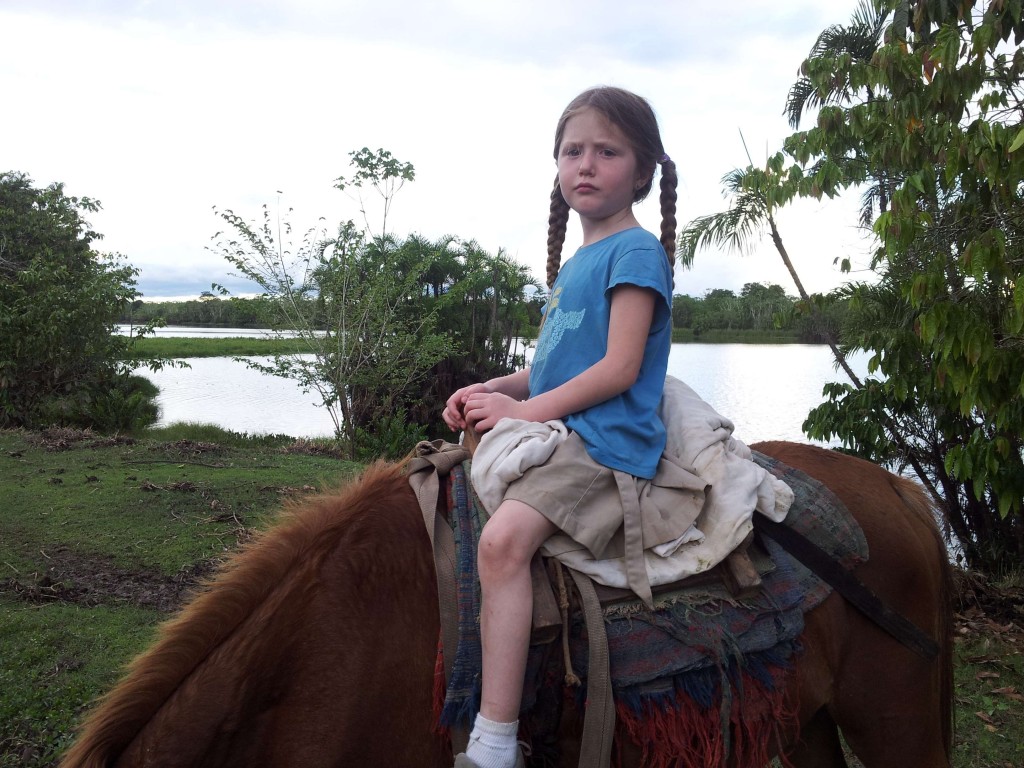
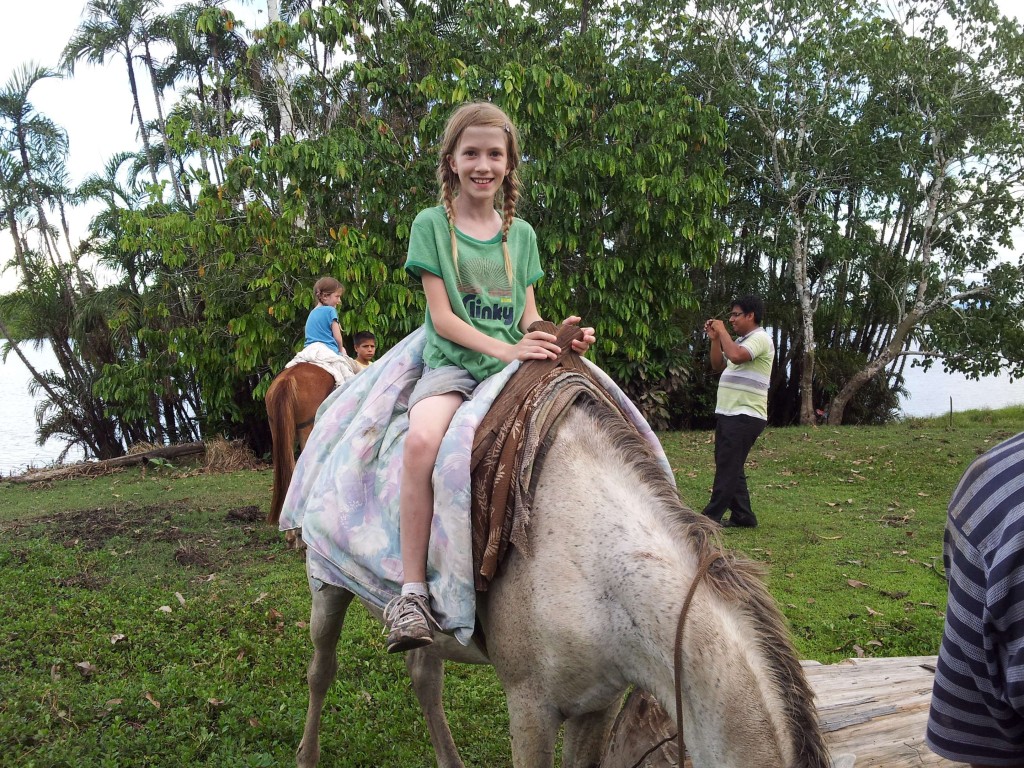
But it was starting to get dark and it seemed to me like we had a long way to go. No one else seemed too concerned. We said goodbye to Pepe and his family and Gabriel began the search for another three-wheeler thing to take us to the next river where we would canoe to a bigger river and then to a bigger town with a hospedaje. He found the local village policeman who had one of the three wheeler things and we headed off down a dirt path into the jungle as the sun was setting, another beautiful and unforgettable trip. At dusk, the bugs all come out. On the boat, we would watch the spiders come out at dusk and respin webs and then retire to their hiding spot. Riding on three wheeler means we go splattered with bugs.
We arrived at the river and secured another log canoe. This one we shared with another family heading to the same village. The sun set before we made it to the canoe. We navigated the entire tributary and the big river using Grandpa Ted’s little LED flashlights he gave the kids. There all kinds of things in the river to watch for such as logs giant enough to make a huge canoe and alligators.
Mark, Ryan and Gabriel sat at the stern and looked for logs and such. We used an outboard motor on the bigger river and we hit logs so many times and each time the motor would stop and we would have to check the propeller. It was very exciting. We had to stop at a few homesteads and none had electricity, just candles burning in the window. We had visited a few jungle homes and they did not have walls which was unsettling to us considering all the bugs.
We arrived late (by jungle standards, nearly 10pm) and found a hospedaje for the evening. In the morning, we had a private car (sounds so fancy) pick us up and drive us the 4 hours to the town where we could catch a plane back to Lima.
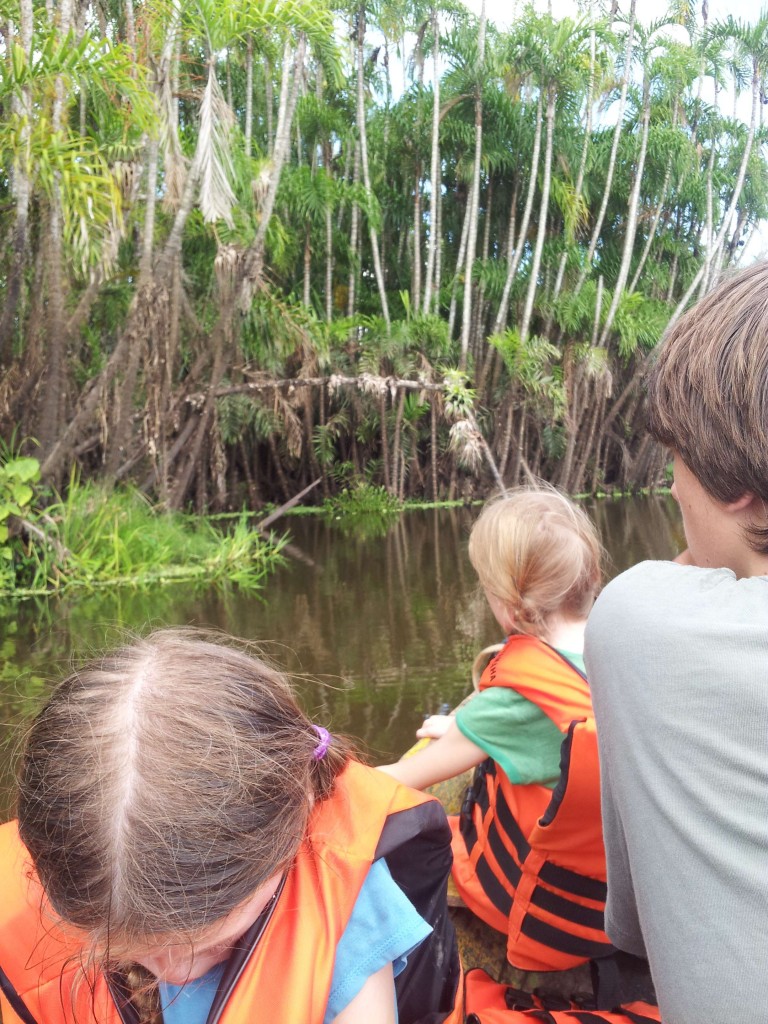
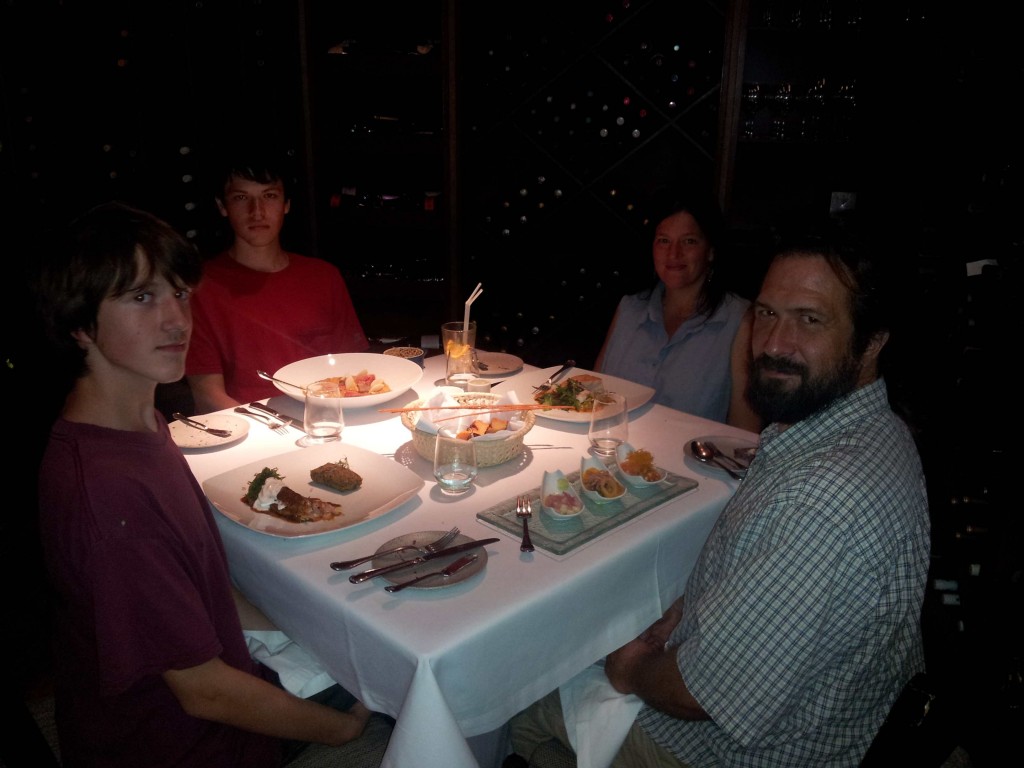
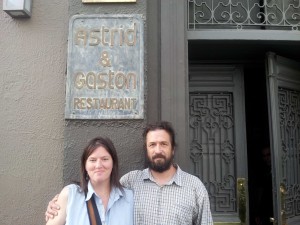
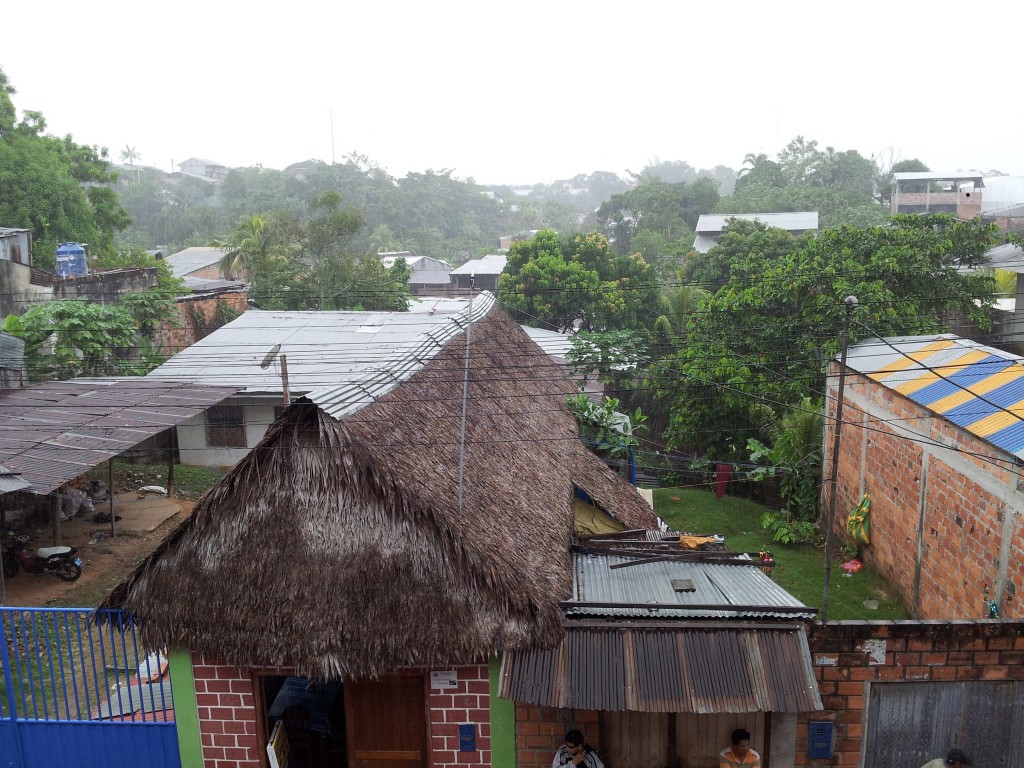
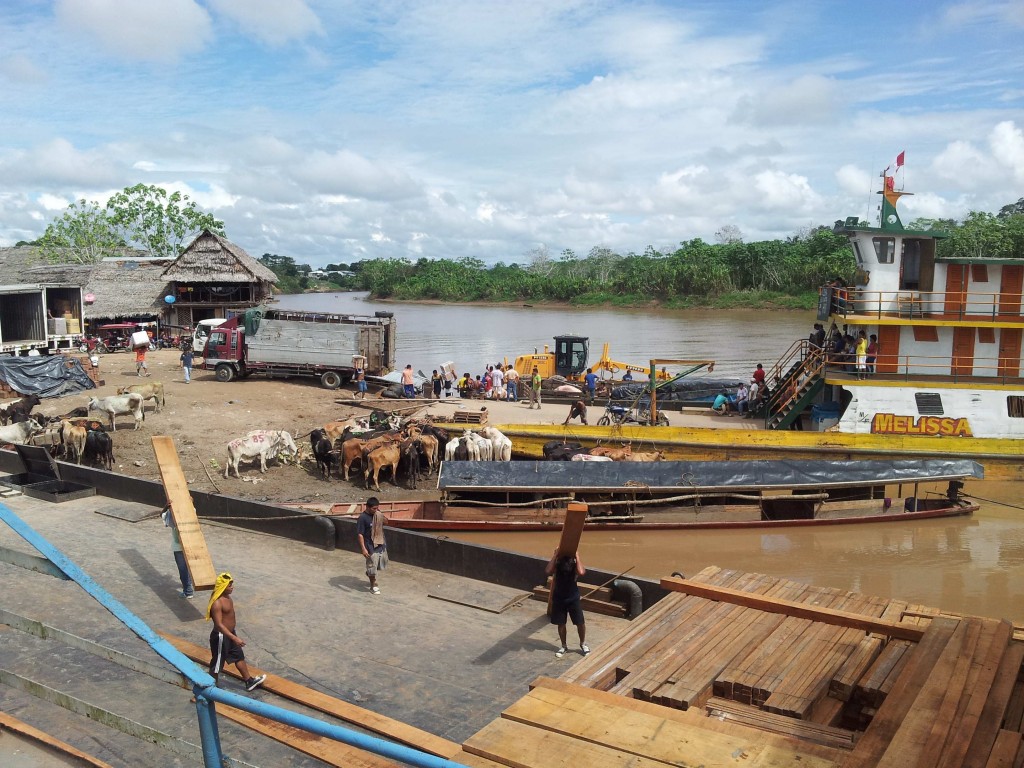
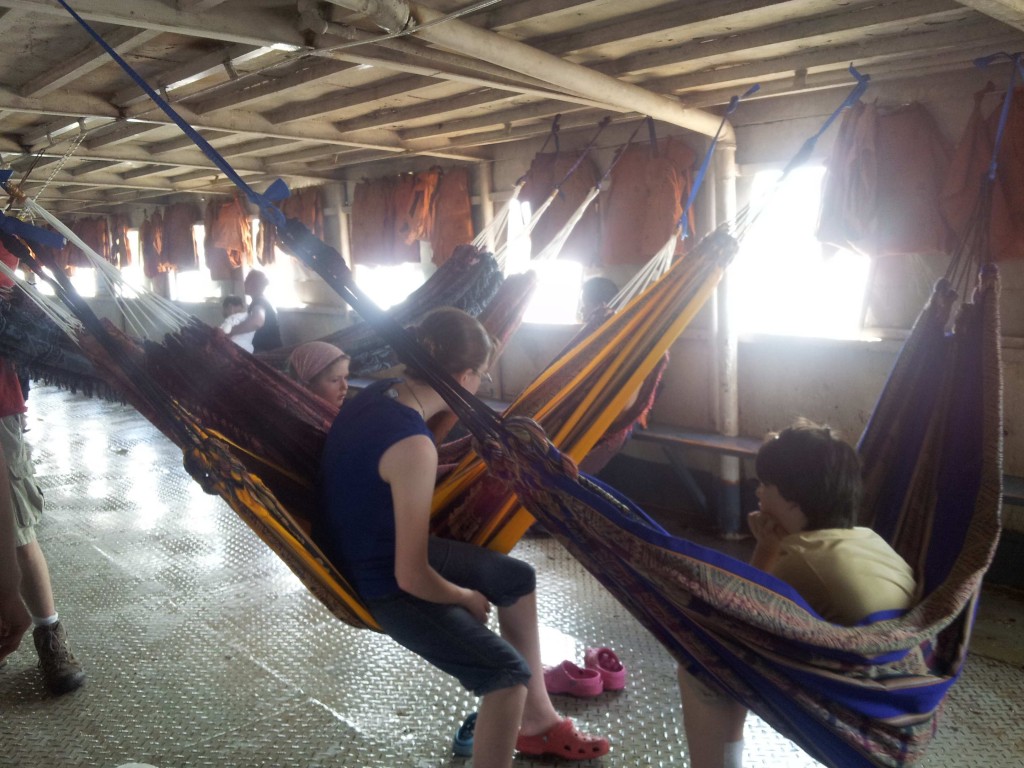
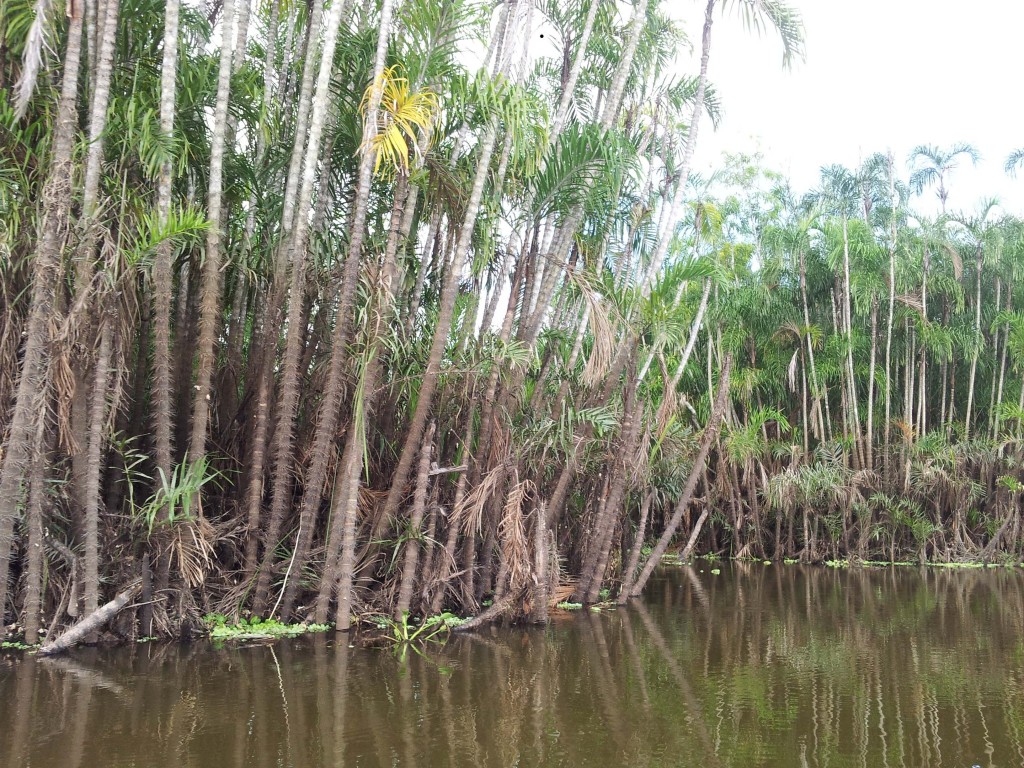
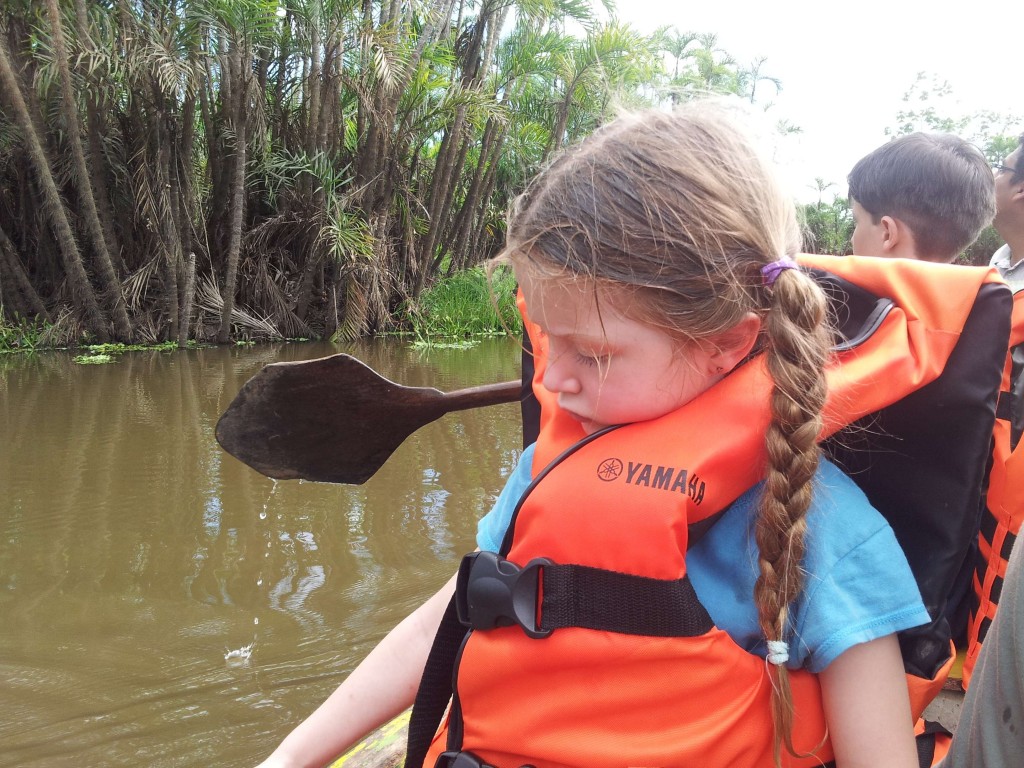
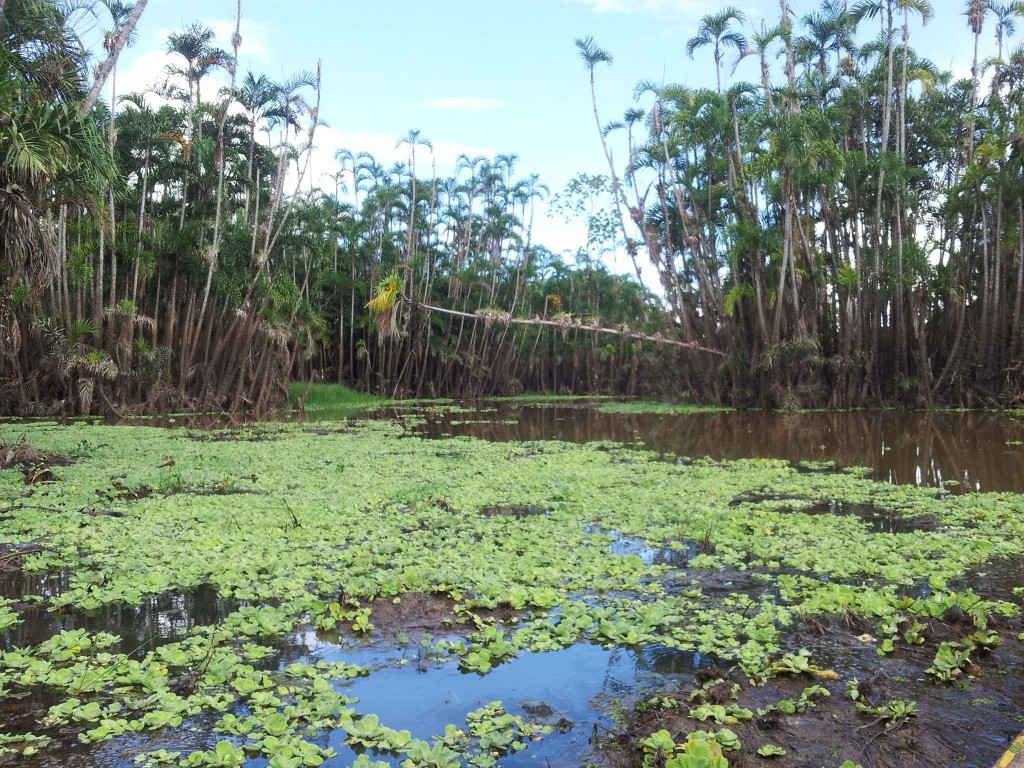
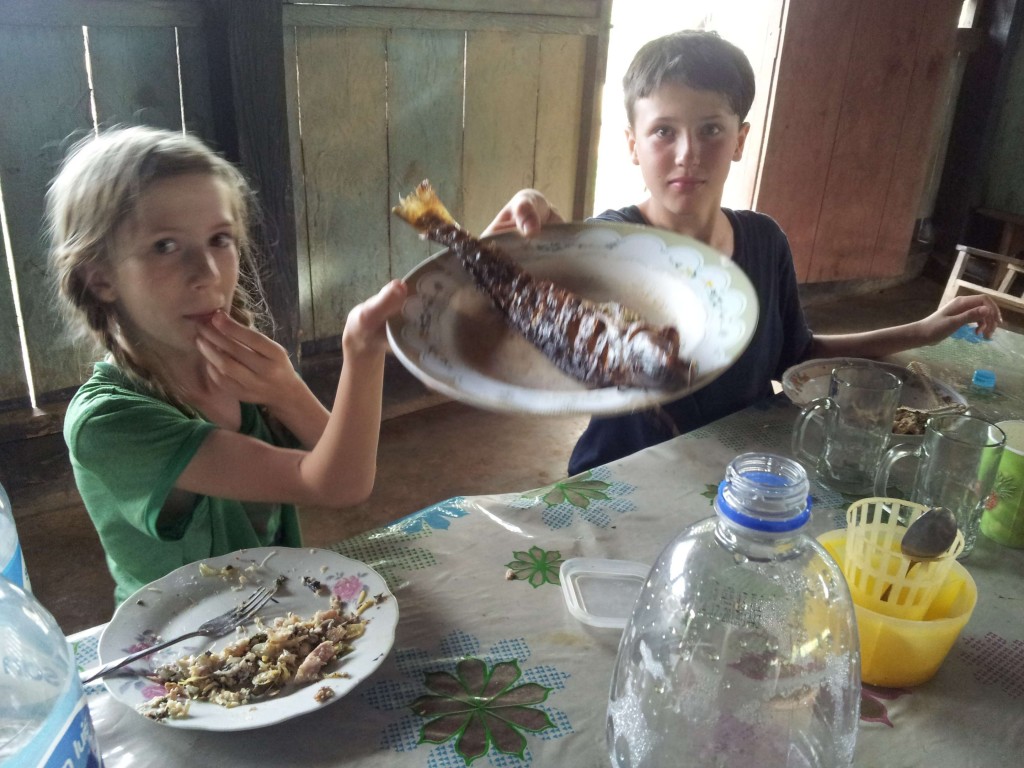
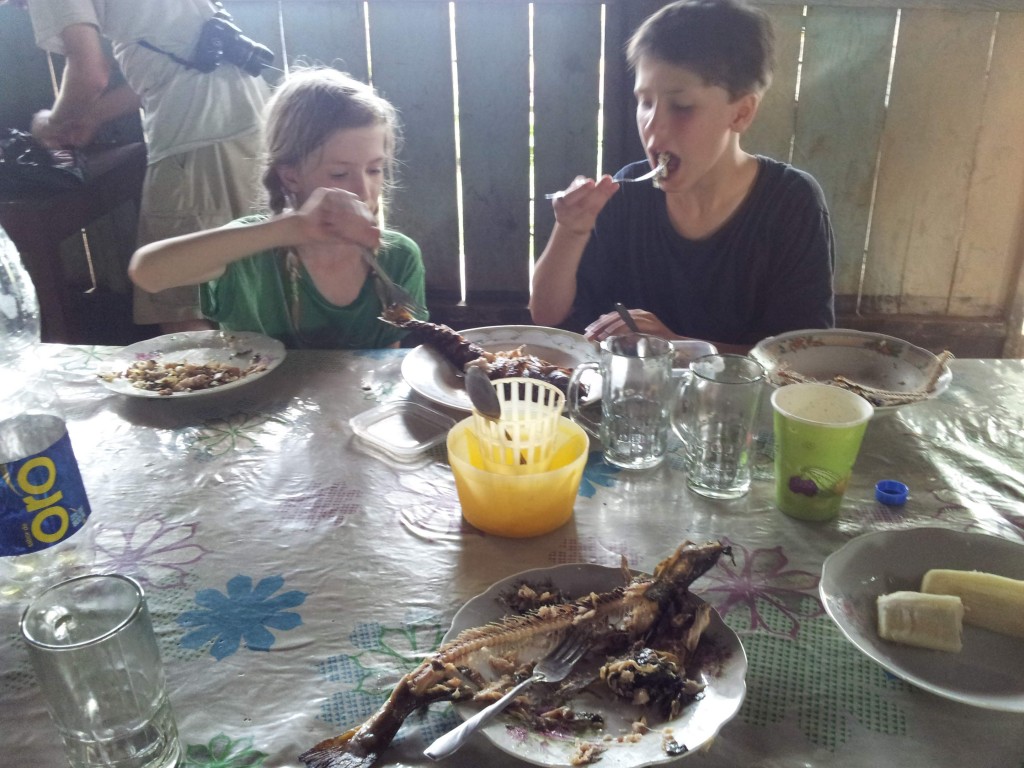
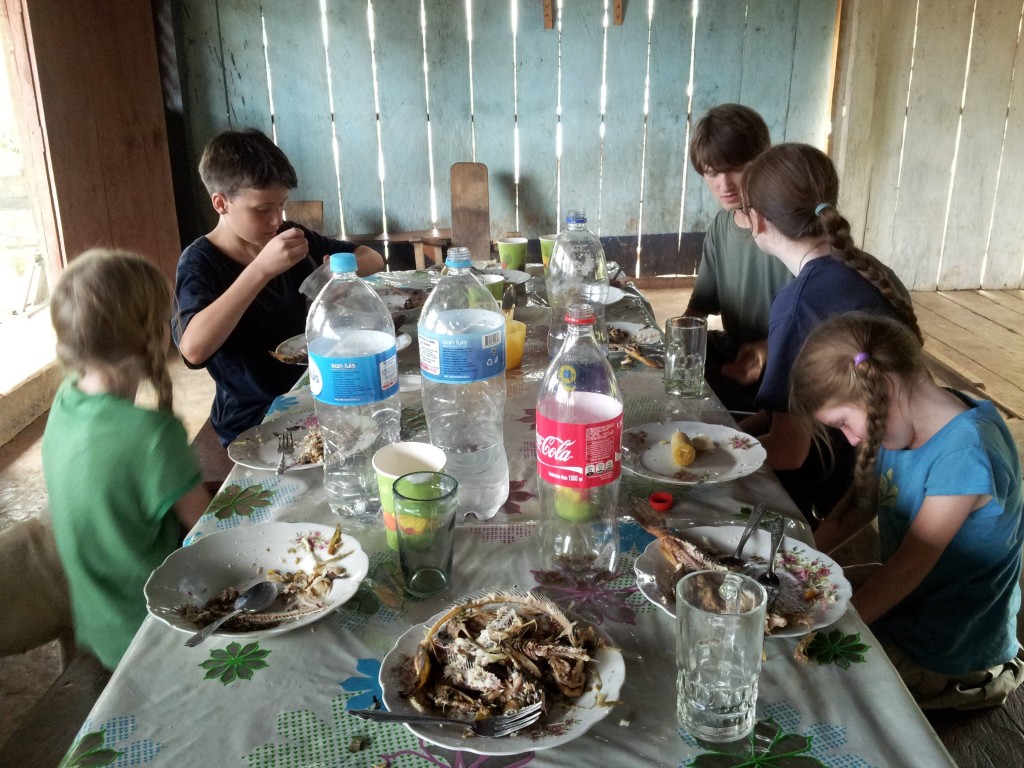
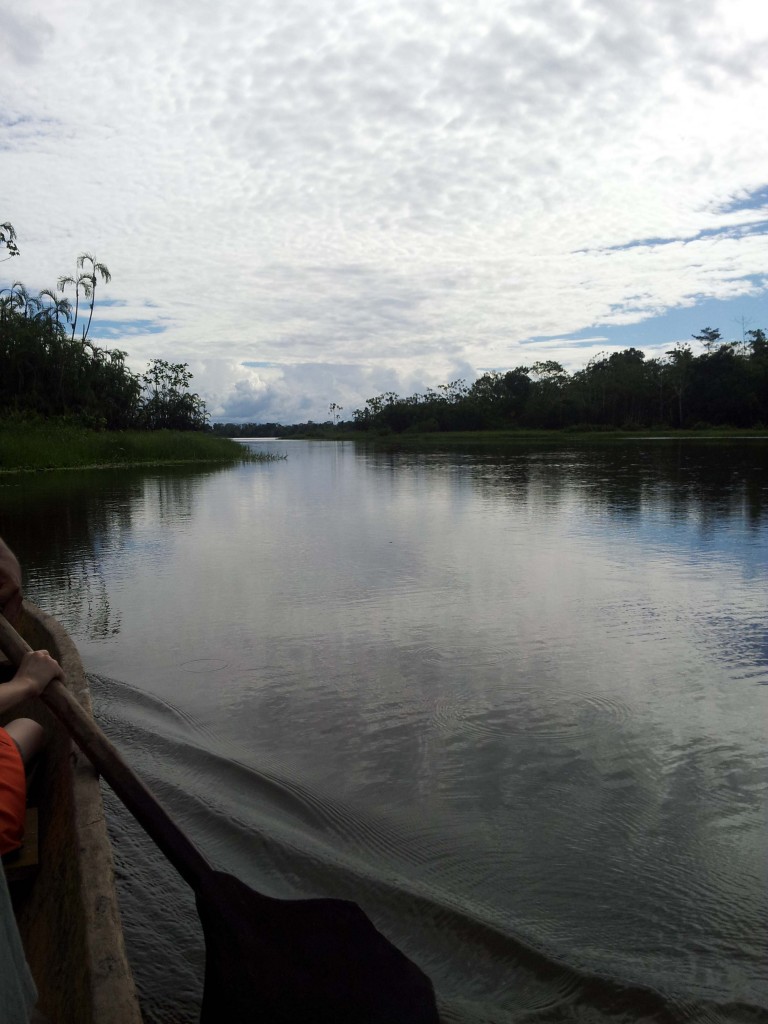
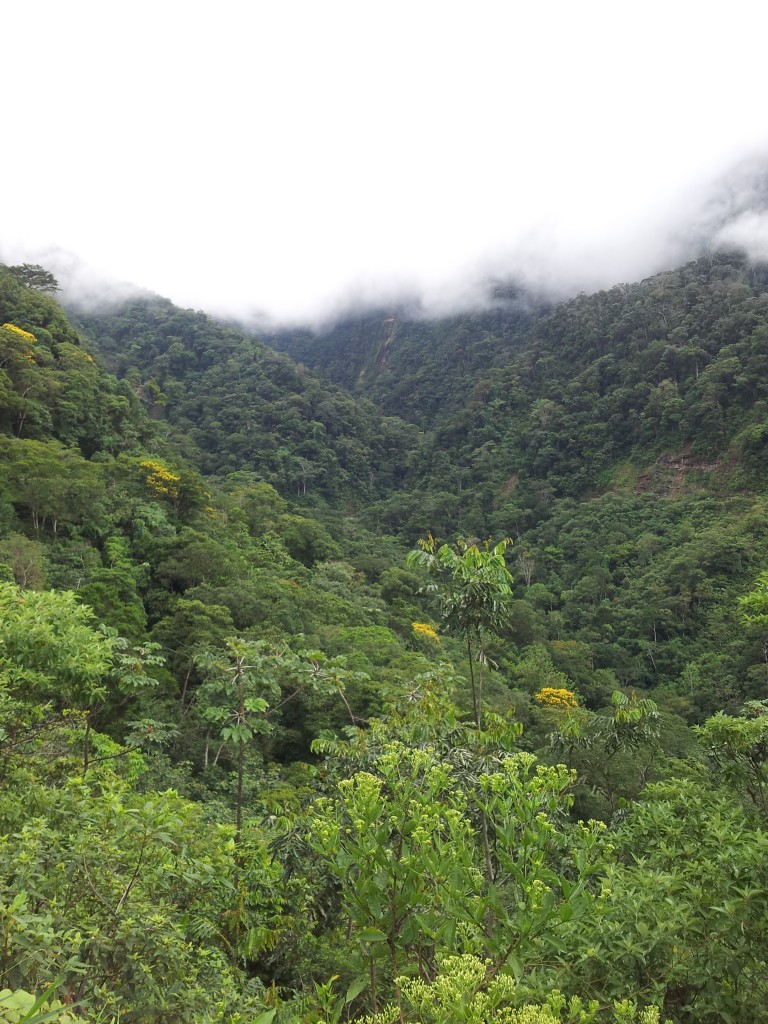

Leave a Reply